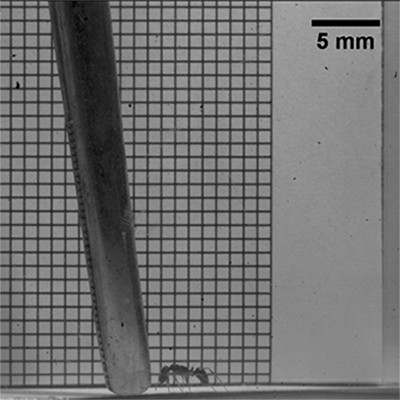Size & Scale
Small size is central to the extraordinary abilities of systems using latch-mediated spring actuation (LaMSA). Using springs to generate movement works best when the moving mass is small. Above a certain size, it simply is not possible to achieve superlative mechanical power density with springs. Even archers know these limitations: they use arm muscles to put energy into the elastic bow which then powers a lightweight arrow at remarkable speeds. LaMSA organisms do the same thing - many have their “motor” separate from the loaded spring and powered mass in order to keep the system lightweight. Jumping organisms that use their elastic mechanism to power the movement of their whole body weight are all small! In physics terms, as the characteristic dimension of an organism or robot decreases, the relative strengths of various forces increases (eg. mass/inertia, surface forces, fluidics, etc.). Thus, we study how size relates to the ability of a system to be used repeatedly (i.e., not break) and how size affects the forces, speeds, behaviours, and performance of biological and synthetic LaMSA systems.
